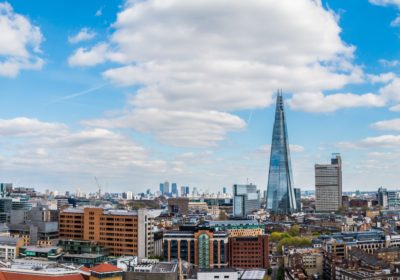Sometimes a shock to the system has unexpected benefits. UK cities have been hurt by the pandemic and there has been immense harm caused to many sectors that thrive on density and agglomeration. However, our cities might be down, but they are not out.
It is easy to make the case for the decline of cities. It goes a little like this: Homeworking is the future. Why waste all that time commuting into offices when you can do the job from your living room. There’s evidence to back the thesis. A recent survey suggested 31% of employers intend to use home working as a permanent business model.
Rents in Greater London fell by 8.3 percent last year to reflect the ructions. Corresponding falls have also been seen in Manchester, Birmingham and other key cities. Hamptons reported that Londoners bought 73,950 homes outside of London last year. This is the highest figure since 2007.
The narrative of decline does not end there. There is also Brexit and a points-based immigration. One study estimated around 700,000 have already left. The fear is that the pandemic combined with Brexit will suck the vibrancy out of our cities.
We love our cities
Cities have been tested before. After the Second War, there was a population fall in many of our key cities driven by Government policy and industrial shifts. Despite the test, after a period of hollowing out, they came back stronger.
The reason for the bounce back is the magnetic draw of successful places that blend people and infrastructure. This cannot be replicated easily.
Employers and people found their way back to cities when they realised it was only in such places that innovation and growth could be harnessed. It was what led to the growth of the UK’s diversified service sector, such a feature of UK plc in the last thirty years. Connectivity and innovation spark off and people want to be there for the ride.
The desire to be around other people has not deserted us. Eat Out To Help Out sent many restaurants roaring back to life over the summer and in some places even brought an early onset of the second wave. It revealed the pent-up demand waiting to come back. Just imagine when the theatres and galleries also return.
Facts of life
Our cities were overheating before the pandemic. In many places they could not keep up. Overcrowding, grown-ups living with their parents, poor quality subdivisions of housing and an inability to build enough to keep up with the population all played a part. Moreover, many families were choosing to stay in cities. Cities were too successful.
The pandemic will change things. It’s not a bad thing if population is a little more evenly distributed and housing becomes a little bit more affordable.
However, Government policy is not about to shift. It remains city focused. No Government will build over green fields and so new housing and infrastructure will continue to be delivered in urban areas.
In many parts of the country, the roll out of digital infrastructure will remain a barrier. Out of 221 countries surveyed last year, the UK placed 47th, down 13 places compared with 2019 on fiber roll out and average speed here is currently 38 megabits per second, trailing most of western Europe, the US, Canada, Japan, South Korea.
We love our cities but we also need our cities. The pandemic will not change this.










